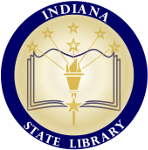isua-alumniassociation-directory-1930-016
| Description: |
xvi THE ALUMNI DIRECTORYdollars. The stadium is one of the very finest in the middle west andsome of the inter-collegiate games of the school take place in it. TheCollege, therefore, is able to stage its athletic sports in a setting enjoyed by few schools other that the larger universities.Paralleling the expansion of the material plant now representingan investment of two million dollars, the attendance of students hasgrown from an enrollment of twenty-three students who were presenton the opening day in 1870 to an enrollment in 1928-1929 of 3,761resident students and an additional 2,578 non-resident students. Sincethe school was organized and up to September, 1929, 82,519 differentstudents have been in attendance and over 6008 have been formallygraduated.The growth of the school is further reflected in the increasedFaculty numbering over one hundred regular members and chosen forthe express purpose of training teachers for the public schools. Fourteendifferent departments offer every phase of work required by law inthe public schools, including grade and high school subjects, professional courses, industrial arts, home economics, agriculture, physicaleducation, commerce, art, and music.When the school was organized in 1897 its first courses for thetraining teachers were relatively elementary. Few of the early studentshad enjoyed high school privileges before coming to the Teachers College. At that time the law made no requirements for teacher trainingother than a formal county examination. The student body of thoseearly days was, therefore, represented by teachers and prospectiveteachers who came of their own volition. A large proportion of thestudents consisted of teachers who had been in the service for sometime but who felt the need for further training and were willing tomake the outlay of time and money to secure this. The result was thatin spite of the educational handicaps of those days, there developed anearnestness and a seriousness in the study of teaching problems whichwas one of the early assets of this school.With the rising requirements for teaching made by the State ofIndiana, the conditions for admission were placed in 1907 at graduation from a commissioned high school or its equivalency and the schoolwas, therefore, lifted so far as its admission requirements were concerned to the level of standard colleges. The growing importance ofthe high school in Indiana made it necessary for the College to meetthe problem of training high school teachers and so there was organizedin 1909 what is known as the college course, consisting of four years ofwork above the commissioned high school and leading to the baccalaureate degree. In 1924 all the regular courses of the school wereraised to a collegiate basis so that persons completing any of the pres-scribed two-year courses for teaching in the elementary schools of theState might on their return to the school be admitted to advanced standing on four-year courses.In 1928 the courses of the school were organized into a JuniorCollege, comprising the freshman and sophomore years, and a SeniorCollege, comprising the junior and senior years. With this organizationa fairly definite sequence of studies was established making it impossible |
|---|---|
| Source: |
http://indstate.contentdm.oclc.org/cdm/ref/collection/isuarchive/id/38157 |
| Collection: |
Indiana State University Archives |
Further information on this record can be found at its source.




